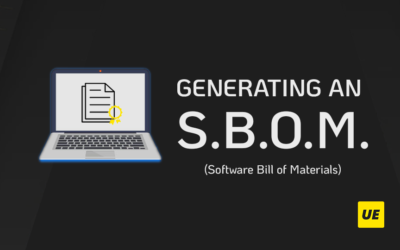Developers use special tools to write the source code of the programs. These tools allow them to simplify and speed up the process of writing code, finding and fixing errors, etc. A code editor and an IDE are the main software that is used for creating programs. In this article, we will talk about IDE vs. code editor: the features they provide, their advantages, and disadvantages. If you don’t know which tool you should use to develop your program, be sure to read this article to the end.
What is a code editor?
The code editor is a developer’s tool that allows you to write and edit program source code. It is similar to a text editor but has more built-in features that help you write code. The code editor can be a standalone application, or it can be a built-in part of an IDE.
The code editor provides a list of useful features that speed up and simplify the process of writing code. The most common ones are listed below.
- Syntax highlighting. The code editor allows you to color certain characters with different colors, which allows you to quickly read the code and find errors.
- Auto-formatting. Automatic indentation allows you to save code in a convenient format and save time on manual formatting.
- Autocomplete. This feature reduces the amount of code you need to manually, which speeds up the coding process.
- Navigation. The ability to move back and forward through the code, to the previous place, to jump to a specific method, type or definition, etc.
- Find and replace characters in one or more files.
- Ability to select multiple lines and work with them at the same time.
Pros
- Provides a list of advanced features that simplify the process of writing source code.
- Requires little disk space on your computer.
- Easy to install.
- Provides high performance.
Cons
- Not suitable for large and complex projects that require integration of code into another project, debugging, and testing code.
What is IDE?
IDE (Integrated Development Environment) is a reliable software environment that combines various tools for developing programs. It simplifies the software development process and allows you to manage and deploy multiple tools at the same time.
The IDE includes a text editor, code editor, debugger, compiler, code testing and profiling tools, and more in a single graphical interface.
Main features of the IDE:
- Ability to write and edit source code.
- Syntax highlighting. Like the code editor, the IDE provides code highlighting to make it easier to write and read code.
- The compilation. It is the process of translating program code into a computer language.
- Ability to debug programs.
- Code auto-completion. This feature saves developers time writing code and reduces the chance of errors.
- Integrations and plugins. Ability to install additional tools to improve workflows.
- Ability to profile and test code.
Pros
- Provides the same features as the code editor and has additional functionality.
- Contains tools that allow you to check your code for errors.
- Contains tools that allow you to analyze the performance of programs.
- Can provide ready-made code libraries.
- Allows you to install additional plugins.
Cons
- Requires a lot of free disk space.
- The installation and configuration process can be long and complicated.
- Works slower compared to the code editor.
IDE vs. Code Editor: What’s The Best?
The code editor is a text editor that provides additional features for writing program source code. IDE is a set of tools for creating programs, which includes a code editor. In addition to code editing, the IDE provides a number of other functions such as debugging, compiling, testing, and others.
Although an IDE gives you more options than a code editor, it is more difficult to learn. In addition, it requires significantly more free disk space and time to install.
Before choosing which tool to use to write code, developers should consider their IDE and code editor feature requirements. If your project is fast or simple, if you write raw code, then you should choose a code editor. If the project is large and requires complex integrations, then you should select an IDE. So, the best tool depends on the requirements of the developers.
What additional features provide UltraEdit code editor?
UltraEdit is a popular powerful code editor that has advanced features for program development. These features make it possible to quickly and easily edit, debug, and format your code.
UltraEdit is cross-platform (runs on Windows, Mac, and Linux) and is available in multiple languages. It provides syntax highlighting, code auto-completion, and smart indentation features.
This code editor has a multi-document interface and allows you to open and edit multiple documents at the same time. It has a powerful Find and Replace feature that allows you to search for strings in a text file and replace them with other string values.
UltraEdit can open and edit files up to 10 GB. In addition, the multi-threading feature allows it to load multiple large files at the same time without slowing down the user’s computer.
UltraEdit provides a file history window that displays all the changes made to each file since it was created. This allows developers to view the history of changes and make sure they did not make any mistakes.
If you need to edit hexadecimal numbers, then UltraEdit will help you in this case too. It provides a built-in hex editor that allows you to edit and view hex numbers.
An important feature of this code editor is the ability to access remote files. UltraEdit has built-in support for FTP, SSH, and Telnet, allowing you to securely connect to remote servers and upload files for your current project.
You can further expand the capabilities of UltraEdit thanks to its ability to integrate with other tools. Among these tools, the following should be mentioned:
- UltraCompare allows you to compare and merge files and folders, as well as tabular data.
- UltraStudio. It has Git integration and allows you to checkout, update, commit, push, pull, view changes, resolve conflicts, and more.
- UltraFinder. A fast and lightweight program that allows you to find any file, text, or template in any local or remote storage.
- UltraFTP. An FTP client that offers full theme support, session support, an explorer interface, and more.
Download a free trial version of UltraEdit and try using it to write the source code for your programs.







0 Comments